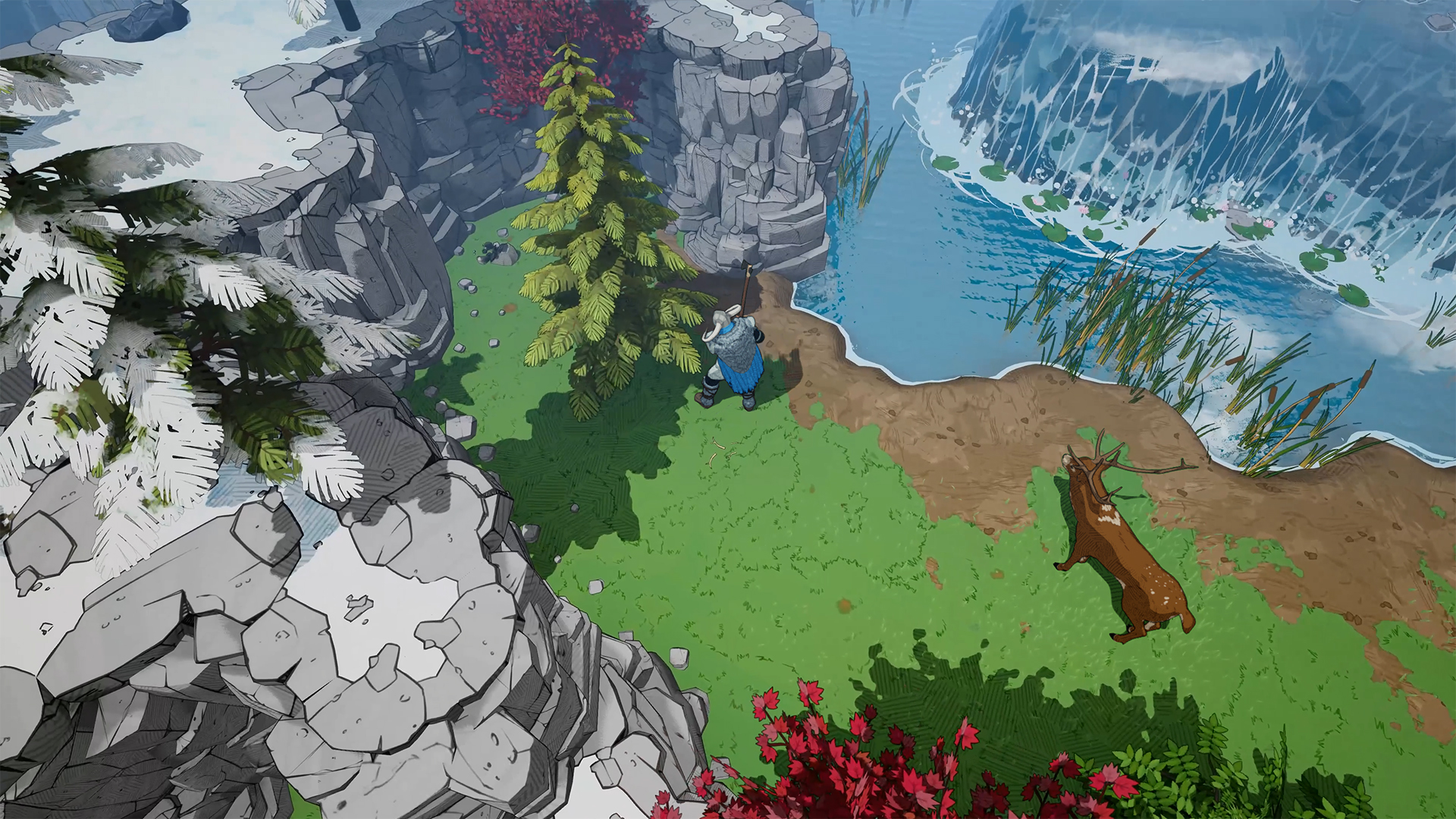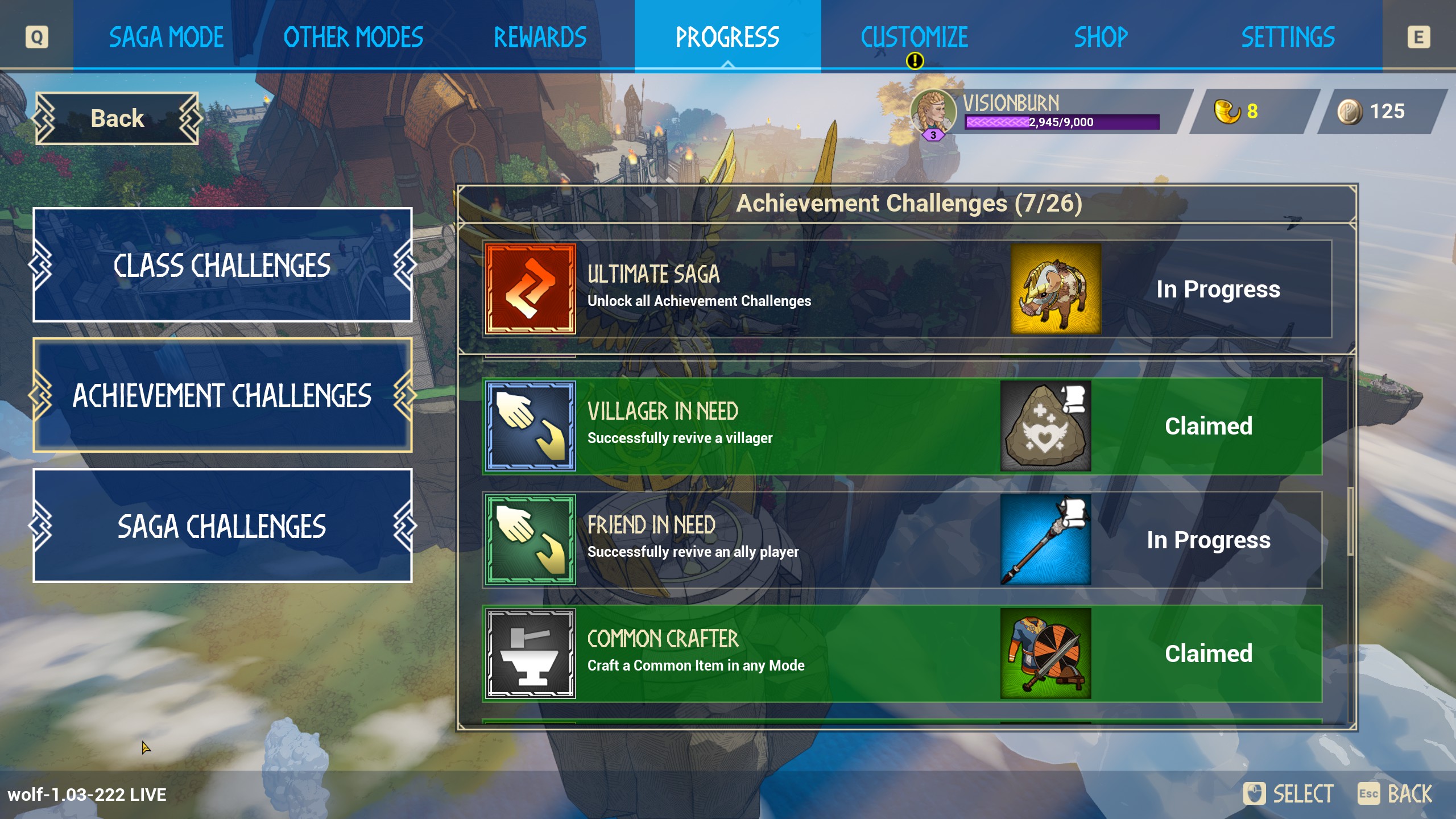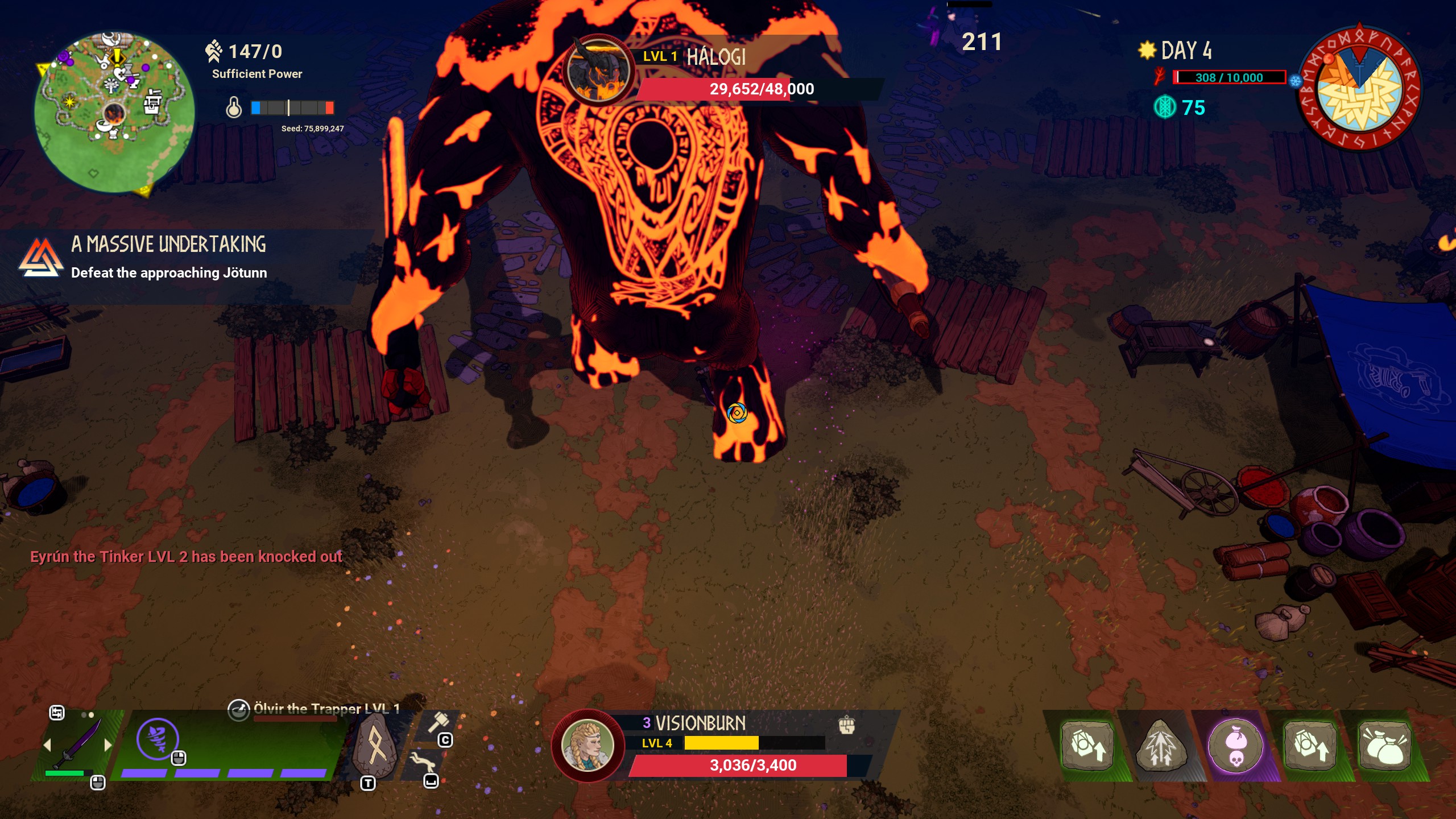Tribes of Midgard's rewarding progression system has me hooked
I came wanting a chill Viking game like Valheim, but I couldn't resist the challenge I found.

It's tempting to compare Tribes of Midgard and Valheim—both are essentially co-op survival games, set in the Viking afterlife—but that's where the similarities end. While Valheim lets you set your own pace, Norsfell's Tribes of Midgard drops you straight into a frantic struggle for survival. And that can be off-putting at first, especially if you're playing solo.
The aim is to survive for as long as you can, overcoming waves of enemies that attack your base by night, as well as fighting off giant bosses. At the same time you need to gather materials to fortify your position, as well as craft weapons and gear. Then you must explore the map as much as you can to unlock fast travel shrines and intercept the invading Jotnar. It's a lot.
The more relaxed Survival game mode unlocks as soon as you hit level two, and that's what I'm most interested in. Saga mode ends as soon as the enemies overwhelm you—or the cold gets you—when Fimbulwinter arrives. Survival mode, on the other hand, gives you a bit more time and allows the seasons to cycle back around. Assuming you can keep enemies from taking your village, it's technically an endless mode.
Survival mode appeals to the part of me that loves the chilled sensibilities of Valheim. There are tough bosses and areas in Valheim, sure, but you set your own pace and can take all the time in the world to prepare for each encounter.
But as I started playing, Saga mode began to grow on me, and I started choosing it over Survival. I became intent on improving on my earlier runs and beating the records I'd previously set, each of which is displayed proudly on the 'Game Over' screen at the end of a run.

On my first try, I didn't even attempt to find the Jotunn when it appeared, so when it arrived at my village with full health, there was little I could do to stop it. My next run went a little better, but I wandered into a higher-level area by mistake, and a couple of enemies made quick work of my Viking warrior.
As each world is procedurally generated, some runs can be more difficult than others. The Stag arrived for a world event on one of my early runs, but in a fairly high-level area—or at least, a place I wasn't equipped to deal with, so I started over. You really have nothing to lose anyway, aside from any souls, gear, and materials you've gathered. But even then, it doesn't take too long to jump back in and get back to the same point. And as you gain experience from each run, you unlock Starter Sets that give you the chance to begin a new game with a set of armour or tools.
The biggest gaming news, reviews and hardware deals
Keep up to date with the most important stories and the best deals, as picked by the PC Gamer team.
Then, eventually, you feel like you're progressing, even when stomped on by an invading Jotunn or ambushed in an enemy hideout. Whenever the Seed of Yggdrasil in your base is destroyed, or you abandon a world, you still get some satisfaction from watching those experience points rack up on the Game Over screen. Each run, however short, adds to your overall progress, so you haven't totally lost out.
Combat feels pretty comfortable, too. There's nothing new or groundbreaking about it, but hitting huge enemies until they fall over is always satisfying. I'm also keen to try out the other classes: As six of them can only be unlocked by playing Saga mode, that's another reason to keep plugging away at it.

There's a lot to learn over a short time, and your first couple of runs will probably end badly—but that's the reason to keep going. You're not supposed to make it to the last boss Fenrir on your first try. Like any good roguelike, each new run gives you more knowledge about how the world works and what you should prioritise to survive. Runs are generally short, too, giving you the chance to see immediate improvement in your next run.
If you're expecting a Valheim-like experience with Tribes of Midgard, you might be disappointed. However, there's a lot that this game offers if you can go into it with the right mindset. It's a brutal game, but one that rewards you if you keep trying. And even early failures contribute to your progress, and not just because of the knowledge you take away.
It's certainly doable solo—I'm surprised by how much I'm enjoying the challenge—but if you have a whole tribe of friends eager to jump in with you, all the better.

Sarah started as a freelance writer in 2018, writing for PCGamesN, TechRadar, GamingBible, Red Bull Gaming and more. In 2021, she was offered a full-time position on the PC Gamer team where she takes every possible opportunity to talk about World of Warcraft and Elden Ring. When not writing guides, most of her spare time is spent in Azeroth—though she's quite partial to JRPGs too. One of her fondest hopes is to one day play through the ending of Final Fantasy X without breaking down into a sobbing heap. She probably has more wolves in Valheim than you.

